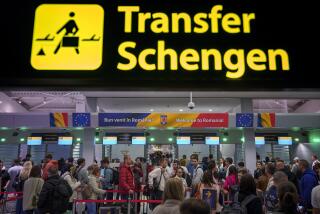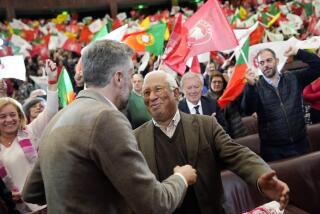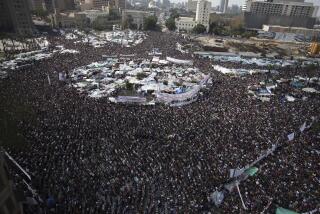Romania is engulfed by protest in a political awakening of the young
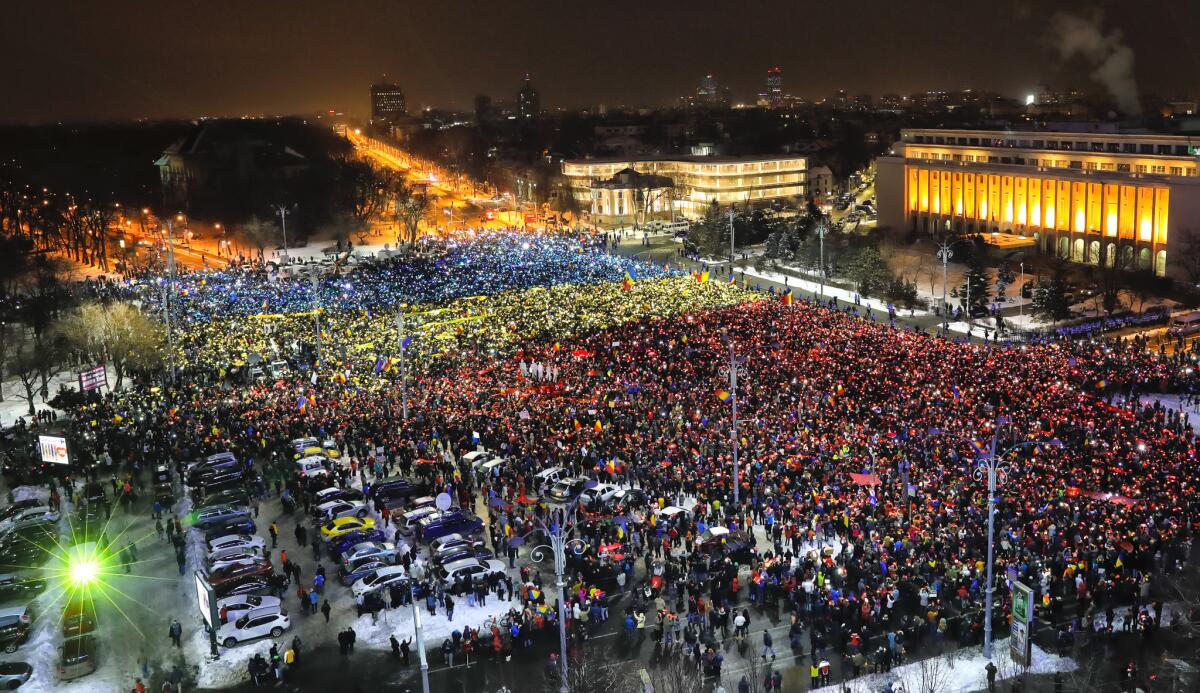
Reporting from Bucharest, Romania — The cartoon depicts a clutch of young demonstrators bundled up warm, their eyes fixed on their smart phones as they scroll through an endless stream of social media updates and hyper-speed newsflashes.
The accompanying text reads: “We all suffer these days from civic FOMO [fear of missing out].”
The drawing by a Romanian protester who, each day, has sketched black ink renderings of the demonstrations that have swept Romania this month, speaks to what many see as a moment of political awakening in this nation of 20 million.
“The demonstrators are young and predominantly middle class, organizing online, using humor,” said the artist, 37-year-old Andreea Chirica. “They have started to think, ‘Maybe I can do something to change this country.’”
For the last two weeks, anti-corruption protesters have marched down alleys and boulevards across Romania, gathering in public squares to challenge an emergency government decree — issued in the dead of night last month — that would have dramatically weakened attempts to clamp down on graft.
Many protesters described the decree — which decriminalized official corruption involving less than the equivalent of about $50,000 — as a deliberate retreat from European Union standards and a thinly veiled attempt to protect corrupt politicians from prosecution.
The ordinance was widely condemned in Romania and by the EU. It would “favor the people who will henceforth commit acts of abuse of office,” wrote Romania’s National Anticorruption Directorate.
At their apex, the demonstrations swelled to some 500,000 people, half of those gathering outside the government offices in Bucharest’s Victory Square alone. It was the biggest display from the people since the collapse of communism nearly three decades ago.
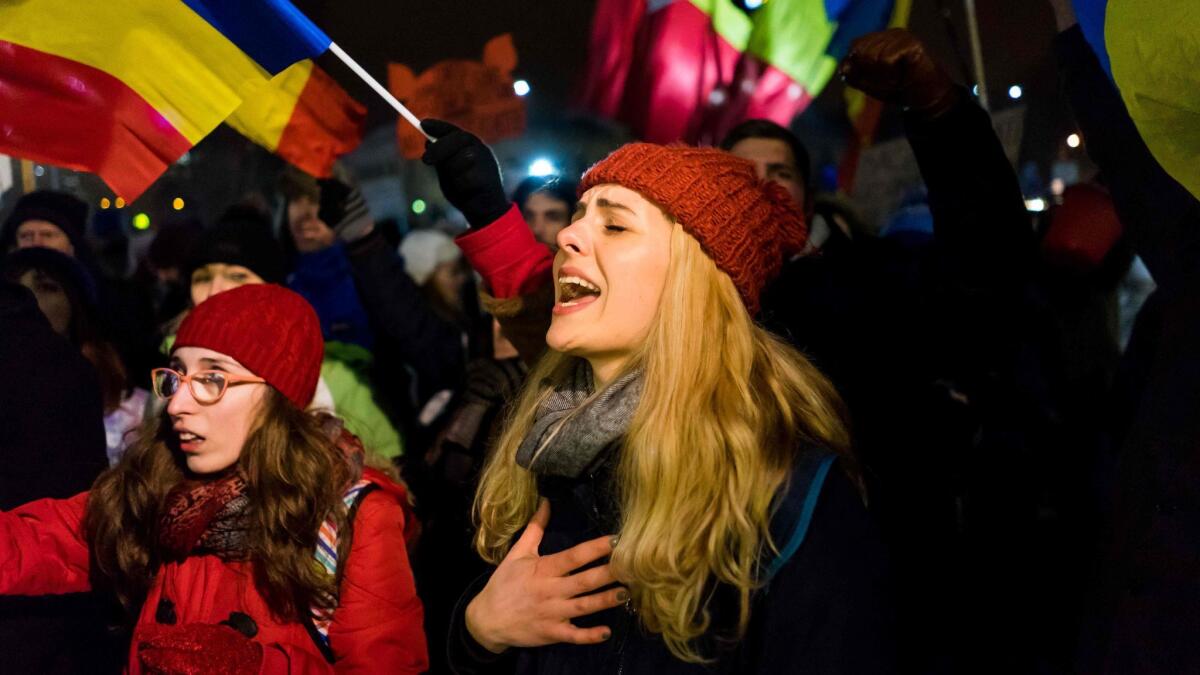
Protesters beat on drums and blew horns, laser pointers skimming across the government building, while chanting: “Like thieves, in the night” and “Resign!”
As snow fell and temperatures plummeted, the demonstrators forced two government ministers to resign and the government to rescind the decree five days after its passage. Perhaps emboldened by that victory, the demonstrators have kept up the pressure, demanding more high-level resignations.
“I don’t want to live in a corrupt country,” said Marina Cordun, 33, a demonstrator wrapped up against the winter chill one recent evening.
For Romania’s urban young — literate, tech-savvy and outward-looking, yet normally deeply apolitical — the protests were the latest in a series of successful demonstrations that began in 2013. Analysts suggest they may augur a broader politicization of Romania’s millennial generation.
“There is this idea that to be involved in politics is to be dirty, that nobody goes into politics unless they’re in it for themselves,” said Radu Umbres, a political anthropologist and lecturer at Bucharest’s National School of Political Sciences and Public Administration.
“One of the aspects of these protests, a growth phenomenon, is that it does reveal a kind of political awakening.”
That awakening began, many demonstrators said, with environmental protests in scenic Rosia Montana in 2013.
Those protests, uniting demonstrators across the country, forced the government to backtrack on plans to allow cyanide gold mining in the country’s picturesque west. Activists said the mining would have polluted rivers, damaged the ecosystem and caused villages to be razed.
“It was a sort of preparation time,” said 46-year-old Florinakkis Arhire, speaking in the western city of Timisoara, where the revolt against Romania’s long-time dictator, Nicolae Ceausescu, began in 1989 as the Soviet Union crumbled.
The networks established during the Rosia Montana demonstrations — and a flash-mob, decentralized-style of organization — became prominent again after the Colectiv nightclub fire in Bucharest in 2015, when 64 people died.
Mass demonstrations forced then-Prime Minister Victor Ponta to resign as vast corruption in the health sector, including a scam involving the use of watered-down disinfectants in hospitals, was revealed in the fire’s aftermath.
A technocratic government was installed for a year, but Ponta’s party, the Social Democrats, returned to power with a strong electoral showing last December.
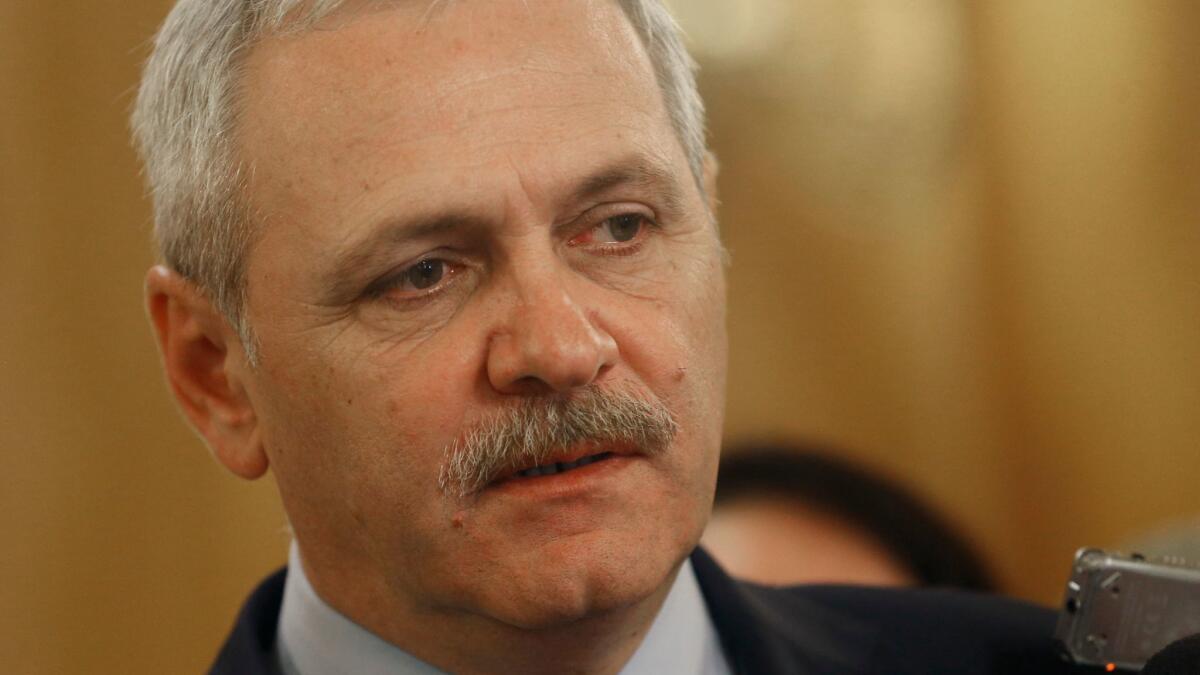
Its leader, Liviu Dragnea, was widely viewed as among the intended beneficiaries of the emergency decree: He is presently on trial on charges of abuse of power and was recently found guilty of referendum rigging.
The decrees would have allowed him to clear his name and rise to the prime ministry, from which he has been barred because of his conviction. But, demonstrators were able to mobilize quickly, much of it done through a Facebook page, started during the Colectiv scandal called “Corruption Kills.”
Romania is one of Europe’s poorest countries, despite being an EU member since 2007. It hosts NATO’s $800-million, U.S.-built ballistic missile site, which outraged Russia when it became operational last year, further embroiling Romania in escalating East-West tensions.
Like many countries, it is no stranger to corruption.
On one recent evening in Victory Square, Claudia Pascu, a 40-year-old demonstrator, recalled her experiences in the maternity ward of a state hospital.
“If I wanted my pillows or sheets changed, I had to pay the nurses each time,” she said. “I was in there suffering, my mouth dry, and they wouldn’t even bring me a glass of water unless I paid them” a bribe.
The country has made significant strides in tackling corruption over the last five years, with the National Anti-Corruption Directorate prosecuting a slew of corrupt politicians and businessmen. It scores fairly high in Transparency International’s rankings of government integrity — tied with Hungary and Jordan for 57th place out of 176 countries.
Since 2014, some 1,100 cases of abuse of office have been brought to trial, with a further 2,000 cases under investigation.
However, the directorate has come under repeated criticism for a lack of transparency and a reliance on wiretaps provided by the country’s secret police, amid fears of politicized prosecutions.
Meantime, the protests of the last two weeks have triggered a backlash, with several thousand government supporters gathering in Bucharest. There is little doubt that, as vast as the anti-corruption street movement is, the government maintains substantial support.
“Romania is a two-speed society: You have Bucharest and the other big cities. But if you go deep into the countryside, the living conditions are often of a developing country,” said Umbres.
In that context, many Romanians depend on connections, which can lead to patronage. There have been examples of entire villages protesting for the release of mayors and other public servants convicted of corruption.
“On one hand, the middle class has managed to detach itself from corruption — they can go to a private hospital and not pay bribes — and they want the entire society to get rid of it,” Umbres said.
But, he added, “Others would prefer a corrupt state. For them, it’s the guarantee of a workplace, or heating supplies in the winter — of survival.”
Johnson is a special correspondent.
ALSO
Syrian war memorial is dividing Dresden, itself a symbol of the ravages of war
By testing a missile, North Korea was probably also testing Trump, experts say
Who’s tracking casualties in Iraq? A California high school teacher
More to Read
Sign up for Essential California
The most important California stories and recommendations in your inbox every morning.
You may occasionally receive promotional content from the Los Angeles Times.
